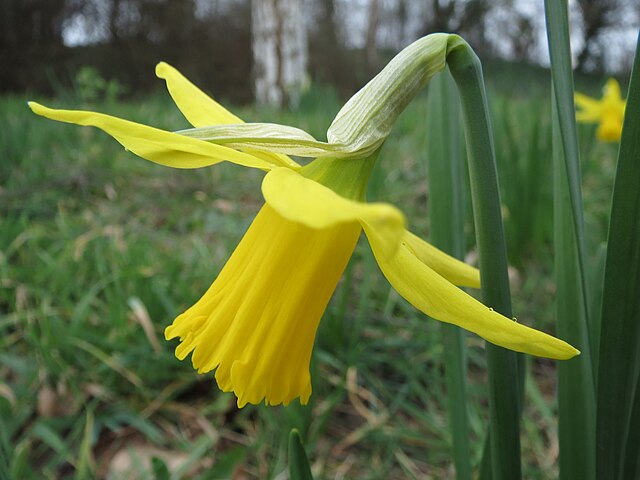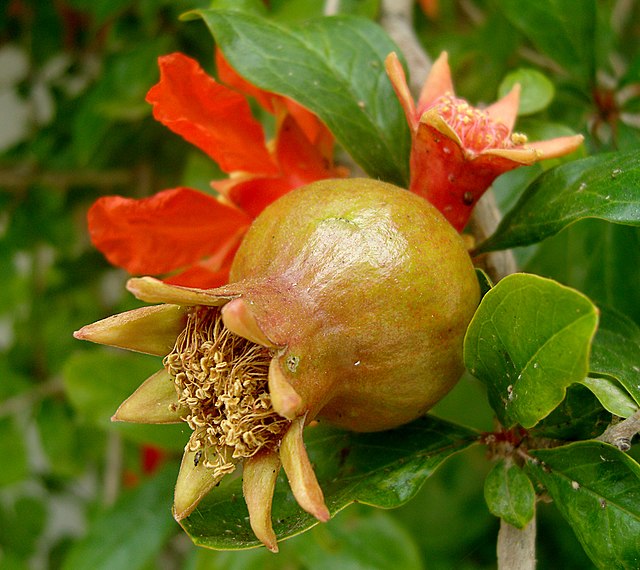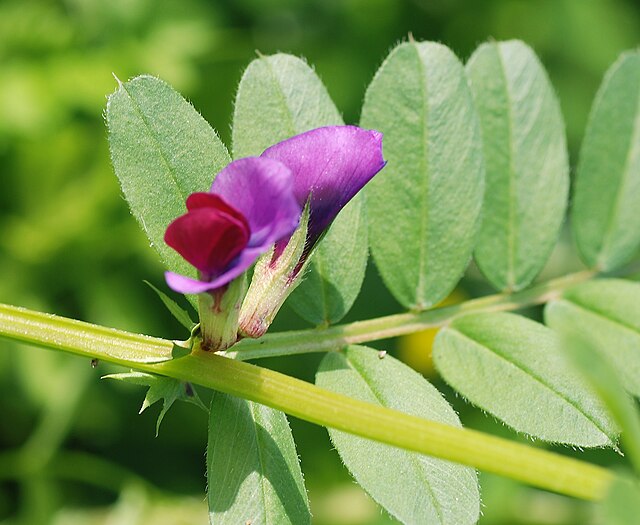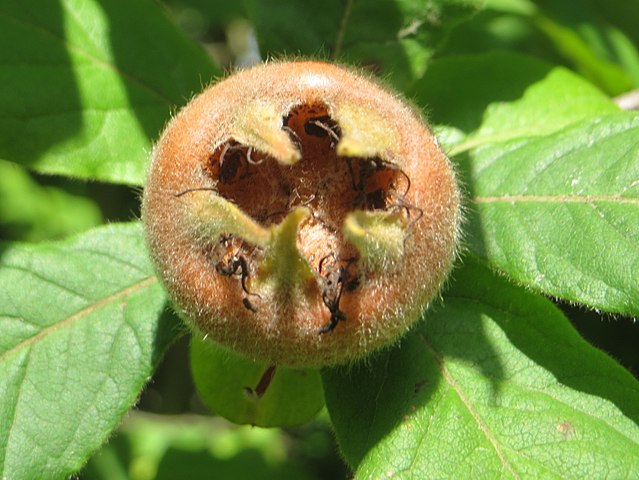In angiosperms, a hypanthium or floral cup is a structure where basal portions of the calyx, the corolla, and the stamens form a cup-shaped tube. It is sometimes called a floral tube, a term that is also used for corolla tube and calyx tube. It often contains the nectaries of the plant. It is present in many plant families, although varies in structural dimensions and appearance. This differentiation between the hypanthium in particular species is useful for identification. Some geometric forms are obconic shapes as in toyon, whereas some are saucer-shaped as in Mitella caulescens.
In Spiraea, the hypanthium supports a nectar-producing "disk" which is ring-shaped and may have lobes as it does here. The stamens arise between the petals and the disk.
Narcissus pseudonarcissus, showing from the upper bend to the tip of the flower: spathe, ovary, hypanthium, tepals, corona
Image: Punica grantum
Image: Young Punica granatum Tunisia 2011
A sepal is a part of the flower of angiosperms. Usually green, sepals typically function as protection for the flower in bud, and often as support for the petals when in bloom.
Tetramerous flower of Ludwigia octovalvis showing petals and sepals.
After blooming, the sepals of Hibiscus sabdariffa expand into an edible accessory fruit
In many Fabaceae flowers, a calyx tube surrounds the petals.
The large calyx of the medlar fruit is the source of its vulgar nicknames.








